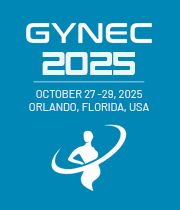Title : Vaginoscopic resection of an obstructed Right hemivagina in Ohvia syndrome
Abstract:
A 10-year-old presented with pelvic pain after menarche. Magnetic resonance imaging (MRI) demonstrated OHVIRA ((right) Obstructed HemiVagina, uterine didelphys, and Ipsilateral Renal Anomaly (right renal agenesis)) [1]. The patient and her mother opted for surgical management [2-4]. Under direct vaginoscopic visualization and ultrasound guidance, a bipolar resectoscope and loop electrode angled 45 degrees from parallel were used to incise the center of the obstructed right hemivagina and drain the hematometrocolpos. A 28-french foley balloon was inserted into the neo-vagina and remained in-situ until POD7 [5]. Oral contraception was discontinued to confirm resolution of pain with return of menses. Two months later, the patient remained asymptomatic; MRI confirmed resolution of hematometrocolpos. OHVIRA occurs in 0.1 to 3.8% of females [6, 7]. Patients present at menarche with pain due to vaginal obstruction and subsequent hematocolpos [6]. The syndrome is confirmed with MRI and treated with septectomy [6]. Septectomy is accomplished vaginally with good long term outcomes [7]. Here, we improve upon previous techniques by adapting readily-available instruments, using 3D transabdominal ultrasound, and preventing stenosis with a foley balloon.
Our institution does not have the default instrument (hysteroscopic bipolar electrodes) for septectomies [8]. However, we successfully adapted a loop electrode to meet our needs. While transrectal ultrasound has been used by others [3], we minimized patient discomfort by using 3D transabdominal ultrasound and direct vaginoscopic visualization. Post-operative vaginal stenosis occurs in 2-15% of patients [9, 10]. Foley placement does not definitively reduce the risk of vaginal stenosis, but may prevent vaginal stenosis after vaginoplasty [5, 11]. After shared decision making, our patient desired foley placement. Here, we improve upon previous techniques by adapting readily-available instruments, using 3D transabdominal ultrasound, and preventing stenosis with a foley balloon.



